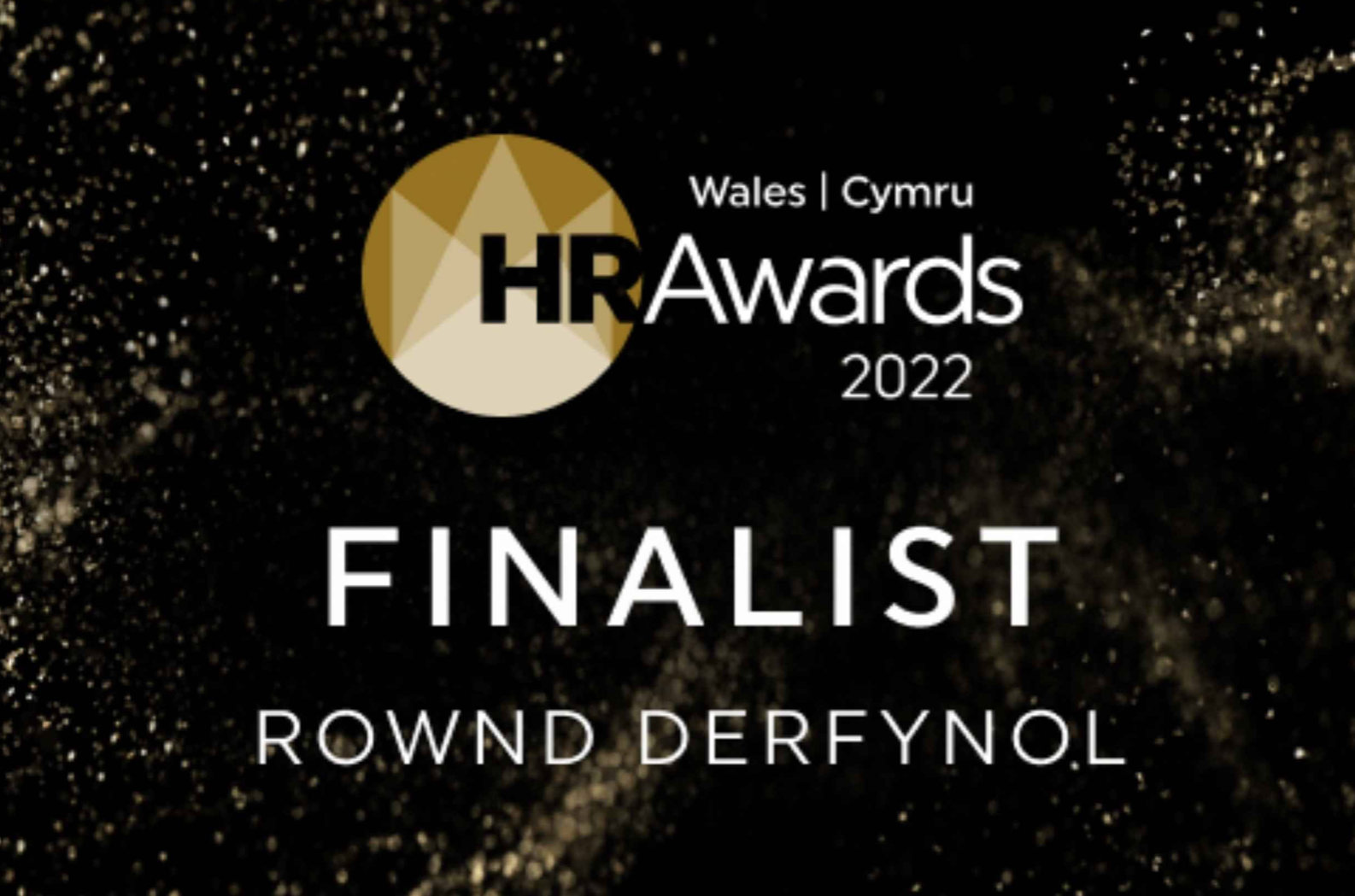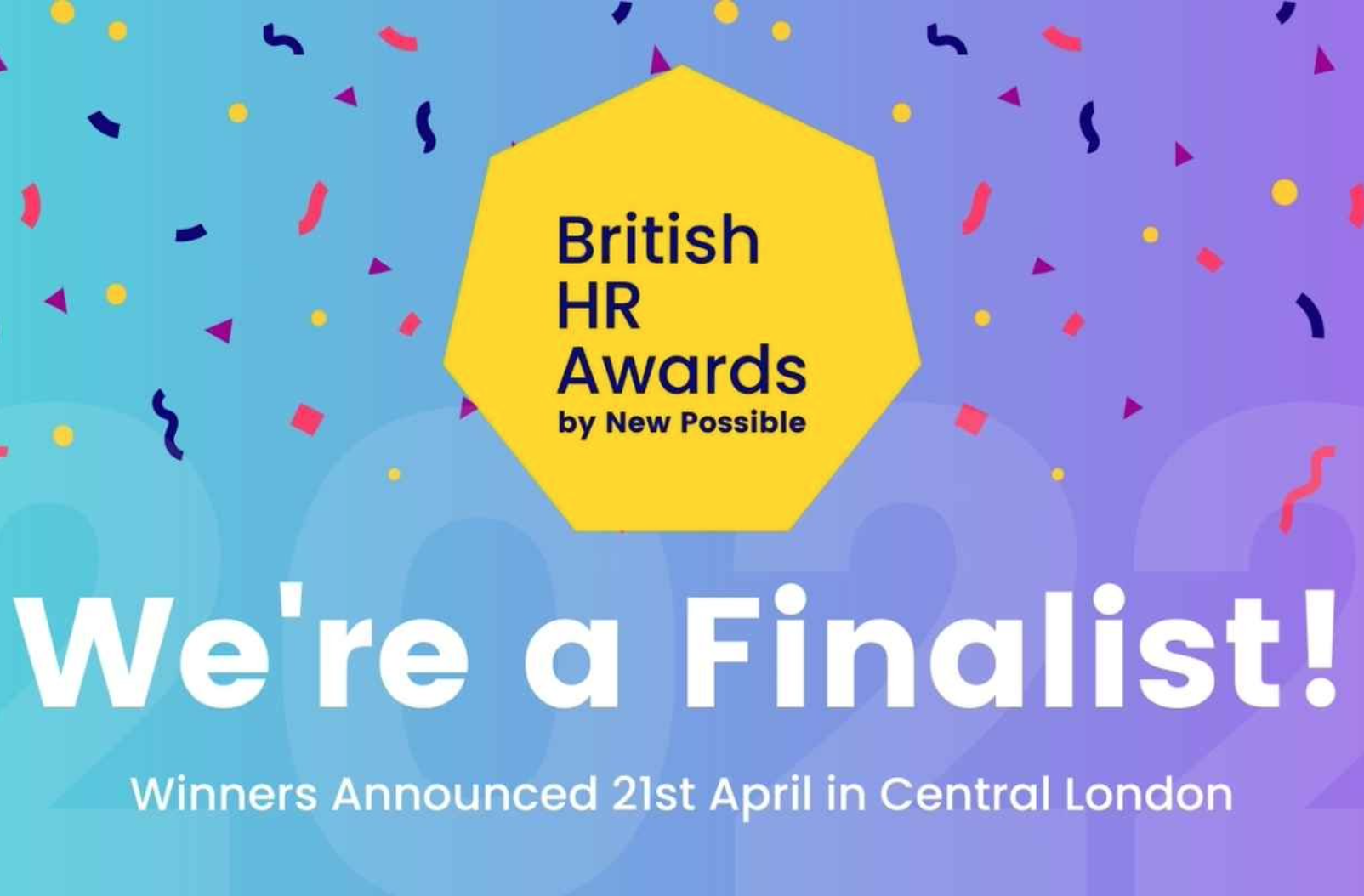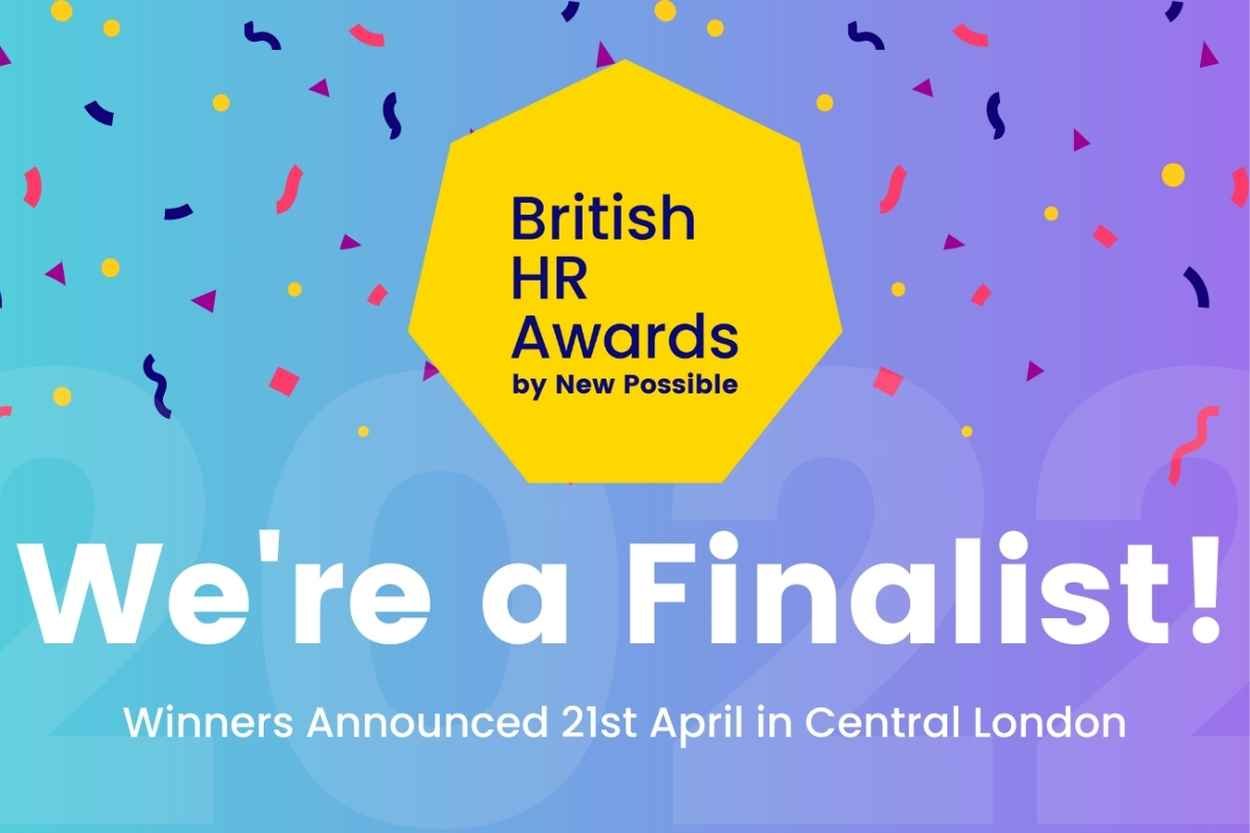Is there ever a ‘good way’ to tell people they no longer have a job? Well, Twitter and Stripe have recently had to grapple with this challenge, with other companies, such as Meta, following swiftly behind.
How leaders respond and communicate in difficult times is key to the health and wellbeing of both their people, and their business. Many companies have often already publicly declared how they want to talk to people, through proudly displayed value statements on their websites.
Blowing your own trumpet on what matters to your business is great, but it must be real. Have a little read of how important Twitter thinks healthy conversation is. In summary … ‘should be able to speak your mind’ … ‘find credible information easily’ …’want you to be part of the conversation’ … ‘you should feel safe.' Then consider the chaotic communication around the severance of potentially 7,500 Twitter staff over the past few weeks. This story has been delivered to the public domain through knee-jerk tweets from company leaders, complemented by tales of exceptionally poor treatment shared by disgruntled (and who can blame them) former employees.
Twitter slashed nearly half of its workforce without any warning or formal process
In stark contrast, financial infrastructure internet startup Stripe, issued a bold press statement, publicly explaining how and why they would be laying off 14% of their workforce. In a message that was slick beyond belief, the leadership team explained clearly what they were doing, and took full responsibility for mistakes that had been made. Their brand values? Well, they include: ‘move with urgency and focus’, ‘think rigorously’ and ‘optimism’. Their statement about staff lay-offs, is a perfect ode to their brand values. This is a crucial lesson for all leaders.
Create strong values, that you can really live by. Make them the foundation for your business and you will have a unshakeable confidence that will help to guide you through the tough times. This nugget, is the first of our essential lessons for leaders on laying people off with decency and integrity …
Stripe cut 14% of its staff and released one of the best statements I've ever seen
Always follow your internal procedures and comply with employment law
Above all, leaders must take note of the clear legislation and guidance from ACAS to guide employers who are considering making redundancies. If you’re not sure which process and procedure to follow, or which legislation applies to your changes, talk to your HR Business Partner or give us a call.
Ending people’s employment is one the hardest things you must do as a leader. We have lots of experience in supporting organisations to make difficult decisions with compassion and confidence. If you could benefit from the advice of an experienced specialist, then please, get in touch.
Twitter & Stripe: Do They Practise What They Preach?



Live your values – more so during challenging times

Lay-off and redundancy procedures should, as a minimum, be legally compliant

Word will get out – manage the message

Remember the people left behind – support them

Put a recovery plan in place

Final thought
I need HR support to restructure my team
Tag: Workplace
HR myths busted: “Cost of living support – all staff, must be treated the same”
Doing the same for everyone means you are treating people equally. But your people are not all in the same position. Treating people fairly means that you do the right thing for that person, so you are meeting their individual needs. Giving everyone the same may feel fair, but it isn’t.

The cost of living crisis will not impact all your people equally. Higher earners will be better insulated to survive. How do you, as a CEO, implement support that helps the people that need it, without ostracising the people that don’t?

What is the difference between treating people equally and treating people fairly?
Doing the same for everyone means you are treating people equally. But your people are not all in the same position. Treating people fairly means that you do the right thing for that person, so you are meeting their individual needs. Giving everyone the same may feel fair, but it isn’t.
Equal treatment (i.e. the same) doesn't always produce an equitable outcome
One off payments may benefit higher paid staff more than lower paid colleagues
- There’s been a lot of publicity about one-off ‘cost of living payments’. Barclays, Co-operative Bank, Sky, Nationwide, Virgin Money, NatWest and HSBC are amongst many big brands that have decided to pursue this path.
- We urge you to think carefully before paying staff bonuses or making ‘cost of living’ payments.
- When you calculate a % of salary, or a cash lump sum remember that some formulas benefit higher-paid staff more than lower-paid staff. This defeats the object of financial support. Same goes for staff who earn commission and are on a relatively low-base pay, will you look at total earnings?

One off payments may increase your gender pay gap
If you’ve got a gender pay gap (and you probably have) and/or an ethnicity pay gap (which you also probably have and may not even measure) take care not to increase inequality through your actions.
Don’t assume low use of an existing benefit means it’s not valuable

You may inadvertently create a wider gender and ethnicity pay gap
If you’ve got a gender pay gap (and you probably have) and/or an ethnicity pay gap (which you also probably have and may not even measure) take care not to increase inequality through your actions
Not every benefit needs to have majority use to be valuable. Removing a low-use benefit might have a significant impact on some team members.
For example, a health cash plan, which gives cash back for dental, optical, and other routine health appointments, might be disproportionately beneficial to working families or those with long term health needs.
Be sure to check the impact of your decisions with a formal Equality Impact Assessment and by listening to your team before you act.
Don’t know where to start when it comes to supporting your team through the Cost of Living Crisis?
We are passionate about finding ways to help bosses do the best they can to look after their people.
Some of what we’ve outlined here is simple, but implementing activity that’s targeted to help those that need it most often gets businesses in a pickle. Primarily because they get bogged down about treating all employees the same.
If you need help to work how to support those that need it in a way that’s fair and legal, then please drop us a line. We’d be happy to talk to you.
We’re a Finalist in the Wales HR Awards 2022

With a range of categories including ‘HR Director of the Year’, ‘Outstanding HR Professional’ and ‘HR Team of the Year’, the Welsh HR Awards 2022 recognises and celebrates excellence across the HR profession in Wales. It’s a real honour to be nominated and make it through to the finals.
The awards will celebrate the unsung HR heroes working behind the scenes to support businesses and organisations of all sizes over the past twelve months.
We can’t wait to meet the other outstanding nominees and to hear about the incredible achievements of these individuals and teams.
We’re proud to be shortlisted for the Consultancy of The Year 2022 Award

Organisations looking for transactional, one-off advice to deal with employment issues are well-served by the market. However, leaders that want to make commercial, customer-focused HR or people changes often struggle to find quality strategic consultants that don’t force them to be tied into subscriptions, memberships, or retainers. That’s where we come in.
We aim to work with clients on long term strategic projects and deliverables. People love working with us because they’re continually pleased with the high-quality work and advice they are getting, rather than because they are tied in.
“I’m thrilled that The Spark Company has been shortlisted and feel privileged to be considered alongside so many other awesome finalists.
This wouldn’t be possible without the generous feedback of our amazing clients and the incredible video testimonials they’ve shared.”
Andrew Knight, Principal Consultant and Founder
About the judges
The Welsh HR Awards 2022 judges include:
-
Rebecca Cooper, Head of People & Development at ACT Training
-
Alison Wright, Director of Calland Wright Consulting
-
Fiona Sinclair, HR Consultant at Darwin Gray LLP
-
Emily Meredith, Group Head of HR at Acorn Recruitment
-
Vicki Richards, Employee Experience Director at UNRVLD
We’ll find out if we’ve won at an awards ceremony in Cardiff on the 8th July 2022.
Darwin Gray’s Head of Employment Law and HR, Fflur Jones said: “We were delighted with the quality and number of entries for this year’s HR awards. The fact so many companies and organisations decided to enter the awards demonstrate in what high esteem these businesses hold their HR managers and teams. They will have played an instrumental role in steering their organisations during the COVID 19 pandemic. We look forward to celebrating all their achievements on the night.”
About the Wales HR Awards
The Welsh HR Awards are made possible by Acorn and Darwin Gray LLP. The Wales HR Awards recognises and celebrates excellence across the HR profession in Wales.
About The Spark Company
The Spark Company specialises in Human Resource Development and Organisational Transformation. Founded by Andrew Knight with the guiding philosophy that putting people first always leads to better business results.
The Spark Company gives clients access to high quality consultancy services to transform productivity and performance across the whole organisation.
We can help with human side of organisational change, mergers and acquisitions, restructures and those thorny HR issues that crop-up from time to time.
Choosing the right HR Consultancy
If your organisation needs to transform your productivity and performance, I’d love to hear from you. I love working with companies who want to make meaningful and sustainable change.
Get in touch for a friendly chat about how I can help.
HR myths busted: “Formal annual appraisals are more important than informal check-ins”
There was a time when it would be considered a clear mark of a rubbish employer if there wasn’t a structured yearly appraisal in place. But the modern workplace recognises that a date in the diary once a year, coupled with a fat form to fill in, is nowhere near as effective as regular informal feedback.

Too many businesses conduct annual reviews in a way that is overly formal, creating unnecessary paperwork and ticking a box, without really getting to the heart of the employee’s performance.
Lots of big companies, such as Adobe, have scrapped the yearly appraisal after realising the huge investment in the process often fails to hit the mark.
At Adobe, after a staff consultation, the old performance management system was replaced with check-in discussions at least once a quarter with less paperwork and proper space to review contributions, reward achievements and gather feedback.
It’s a great example, and is starting to be adopted by many forward-thinking companies.
Formal box-ticking appraisals are a barrier to good performance and development

How often should performance be reviewed?
There is no magic formula, but regular and meaningful is a good rule of thumb.
- Don’t save things up for a yearly formal review
- Involve employees in decisions to reprioritise workloads in real time, and explain why it’s necessary.
- Meet monthly for a structured review and if that’s not possible, no less than every six months.
Daily feedback is 6x more likely to be meaningful than annual feedback
How should I be managing and developing performance in my organisation?
- The key to managing performance is open and transparent conversations, where the employee feels in control of their own destiny.
- Both employer and employee know what’s expected of them, what they’re great at, and where they need support. It’s not rocket science, this approach builds engagement, which is better for business.
- Research shows engaged employees generate 43% more revenue than disengaged counterparts. High engagement can also lead to a tripling in profit growth, an 87% reduction in staff turnover and a 20% improvement in performance.
It's not rocket science: higher engagement = improved productivity and performance

What’s the starting point for a new system?
Make sure both the employee and manager are clear about what their performance is being measured against.
You will need:
- A job description that’s real, not aspirational! It should outline responsibilities, and accurately reflect the job that’s being done.
- A clear understanding of what’s expected at work.
- A rock-solid connection between individual goals and the goals of the business.
- With these basics in hand, managers can agree clear objectives and work out with employees how to regularly measure performance.
Have regular conversations to create a high performance culture

What does a good performance review system look like?
A system that’s working well will increase staff moral, engagement and productivity. It will nip problems in the bud by dealing with anything that comes up quickly, and will prevent the company from spending huge chunks of time on the paperwork that traditional annual appraisals generate.
Top tip: use a blend of formal reviews and informal development conversations
How can I design the right approach for me?
- What works for you will depend on your business, there is no one-size fits all, although as a general guide everyone could benefit from creating a process that:
- Reviews energy, engagement, wellbeing, resilience, skills, personal development and priorities.
- Creates a balanced scorecard which measures WHAT’s been achieved and progress made.
- Gathers feedback from colleagues, customers and managers on HOW the employees’ approach their work.
- Outlines goals and commitments …what’s happening next and how will the business support this.
- Moving from a yearly appraisal system to more regular check-ins may be a huge change for your organisation and managers may need lots of additional training and support.
- Managers may need training and support to give regular and meaningful feedback
Organisational wide forms, systems, templates and guidance are a good idea, including making best use of HR self-service and HR systems. Above all, managers need to be self-aware and understand how to tailor their approach to the needs and wants of each team member.
Managers may need training and support to give regular and meaningful feedback
Organisational wide forms, systems, templates and guidance are a good idea, including making best use of HR self-service and HR systems. Above all, managers need to be self-aware and understand how to tailor their approach to the needs and wants of each team member.
Don’t know where to start when it comes to supporting your team through the Cost of Living Crisis?
We are passionate about finding ways to help bosses do the best they can to look after their people.
Some of what we’ve outlined here is simple, but implementing activity that’s targeted to help those that need it most often gets businesses in a pickle. Primarily because they get bogged down about treating all employees the same.
If you need help to work how to support those that need it in a way that’s fair and legal, then please drop us a line. We’d be happy to talk to you.
Does your HR team make things easier or are they getting in the way?
We’ve talked a lot recently about how to spot when things aren’t going well. We’ve covered cultural blindspots, festering grievances and ineffective organisational structures.
In lots of cases these problems emerge because those in charge of managing HR are distracted by other stuff!
From holiday pay and recruitment challenges through to furlough – a busy HR team often gets bogged down with no time to see the big picture. It doesn’t have to be this way!
Changes to company infrastructure and HR systems could revolutionise the capacity of your HR team and make it easier for your organisation to get things done. After all, most (if not all) HR people want to do the best for you, your teams and your customers.
Our job as HR practitioners is to enable you to achieve your goals and objectives
Great. But what are HR doing, whilst I’m doing all the people stuff?

This might come as a bit of a shock, but virtually all day-to-day people management decisions should sit with line managers, not HR.
This means everything from 1:1s, performance coaching, recognising achievements, managing attendance, and so on…
Organisations that manage people through a centralised HR department are outdated and often not resourced effectively. Gone are the days of HR making decisions for managers or telling managers what to do.
In modern organisations, it’s HR that enables and managers that manage

It makes more sense for teams to be given the skills and flexibility to manage their people properly.
If you can achieve this, then your HR team will have the time and space to make your organisation function better. There are four things they can do to achieve this (Ulrich model):
Be a Strategic Partner
-
This is about the alignment of HR activities and initiatives with your business aims and strategy.
-
Strategic partners see beyond the internal function of HR to consider the customer and how best to organise the business to serve their needs.
-
It’s usually a job for HR Directors and HR Business Partners.
Be a Change Agent
-
An HR team can be instrumental in supporting change that helps the business to achieve its aims.
-
It’s not about restructuring for the sake of it.
-
The role of HR is to be an expert and trusted adviser, and driver of change activities.
-
They should also be able to understand the future skills and talent needed to make any organisational changes a success.
Be an Employee Champion
-
Being an employee champion is about doing the best for colleagues, leaders, and customers, it shouldn’t be confused with formal advocacy or trade union activity.
-
Good leadership, clear brand values and a solid organisational moral compass will nurture authentic employee champions.
-
These people are crucial and act as the conscience of the business, taking care of people at all levels equally, and prioritising ethical and fair business practices.
Be an Administrative Expert
-
We don’t mean the world’s fastest touch-typist!
-
In the past HR was about writing letters and documents for managers as they ‘couldn’t be trusted’ to do it themselves.
-
These days it’s about creating efficient administrative systems, providing user-friendly templates for managers to personalise and most of all, maintaining excellent HR technology that enables people.
-
In short, this is where HR can and should, get out of your way.
HR falls down when we focus on one role and not excellence in all areas

How are HR using technology to manage and enable people?
Knowing when to automate processes and when the human touch is still needed, is a key skill for HR leaders.
We all expect on-demand and instant service, from banking apps to self-service tills in stores, HR is no different.
Our colleagues expect to be able to easily make holiday bookings, record appraisal ratings and access their data at the touch of a button.
An HR team that’s nailed being an ‘administrative expert’ will be creating, maintaining, and evolving systems, tools, and technology to serve you better. Remember, a system with even a minimal level of automation can save hours of wasted time and admin that does not add value, freeing-up time for HR teams to add value in other ways.
HR technology can be used enhance engagement and save valuable time

What is the gold standard for a modern HR team?
Obviously, all organisations are different, but the key is to enable your HR Team to be an integral part of the business, not an afterthought.
HR Teams come in all different shapes and sizes, but the best and most effective HR functions a focused on their customers.
Award-winning HR Teams enable managers and teams to achieve their goals
We’ll give a gold star to any HR team that…
-
Puts the customer first – HR is a core support function, so an overhead that you need to get the best value for. HRBPs and HR Directors should be structuring the business to better achieve your customer goals. When you understand what the customer needs you can shape systems and processes accordingly.
-
Is a genuine catalyst for change – Top HR teams will ask tough questions about how you’re going to achieve your objectives. This can result in minor adaptations and actions, or major restructures and changes to how the business works. Either way, a top-notch HR team will be help you to manage change effectively and sustainably.
-
Empowers others to make change happen! – Your HR team should be the experts at enabling and empowering managers to deliver the business plan for your customers.
-
Makes the best use of talent and skill – Specialists specialise and generalists generalise. Wait…what? We’re talking about making the best use of talent, skill, and experience both within your team and elsewhere. Rely on your HRBP to get the best from your HR service and help you achieve your goals, and leave specialists to deliver project work and key goals across the organisation.
-
Is totally prepared to say ‘no’ – The best HR teams help leaders to avoid unfocused vanity projects and ad hoc ‘people initiatives’ (so unhelpful) that aren’t linked to a proper strategy or business goals. Empower your HR Team to say ‘no’ to things that will not help to achieve your vision.
How can I achieve HR gold?
Be bold and give more power to the people! If your HR team is micromanaging every person in your business from some ivory tower (or just a bog-standard red brick HQ) have a good think about what they could achieve if they weren’t rubber stamping holiday request forms or typing up appraisals.
There is so much that can be achieved by overhauling outdated systems. Even by introducing one single approval workflow in a business, we saved 1,000 hours of management time over a year.
Give me a call and I’ll explain how even minor changes like this can make a dramatic difference.
I need the help of a HR specialist to transform my HR function
You might not know how or where to start changing things to create extra capacity in your HR Team. You might need an experienced and knowledgeable HR specialist to help you get started and create an action plan.
I love working with HR Teams to release capacity and release their potential. Who knows what they might achieve?
Get in touch for a friendly chat about how I can help.
Image credits
Images sourced from Canva Pro and are photographers are not individually credited. If you see one of your photos above, please let us know so we can credit you here. Photo of Andrew Knight by Nick Morrish from Nick Morrish Photography
We’re a Finalist in the British HR Awards 2022

With a range of categories including ‘Best Overall People Experience,’ ‘Wellness Initiative of the Year’ and ‘Rising Star of the Year’ the British HR Awards 2022 sets out to discover and celebrate the organisations and individuals that are truly passionate about delivering a world-class people experience.
This year, just over 100 entries were received from organisations across the UK, and so competition to be named a Finalist proved to be very tough.
Firms taking part range from innovative start-ups to tech unicorns, global giants, not for profits and everything in between.
We’ve been shortlisted for not one, but two awards…
Start-Up of The Year 2022
Consultancy of The Year 2022

Organisations looking for transactional, one-off advice to deal with employment issues are well-served by the market. However, leaders that want to make commercial, customer-focused HR or people changes often struggle to find quality strategic consultants that don’t force them to be tied into subscriptions, memberships, or retainers. That’s where we come in.
We aim to work with clients on long term strategic projects and deliverables. People love working with us because they’re continually pleased with the high-quality work and advice they are getting, rather than because they are tied in.
“I’m delighted that The Spark Company has been shortlisted in two categories and feel privileged to be considered alongside so many other awesome finalists.
This wouldn’t be possible without the support of our amazing clients and the incredible testimonials they’ve shared.”
Andrew Knight, Principal Consultant and Founder
About the judges
The British HR Awards 2022 judges include:
-
Mel Willsmore, People Director at Strike
-
Perry Timms, Chief Energy Officer at People and Transformational HR
-
Kelly Stokes, HR Director at Aldi UK
-
Hannah Reid, People Director at Apple
-
Melanie Punch, Head of UK Careers at Investec
-
Neil Piper, Chief People Officer at KFC
-
Daniel Kasmir, Chief People and Procurement Officer at TalkTalk
-
Nate Harwood, Founder at New Possible
We’ll find out if we’ve won at an awards ceremony in Central London on the 21st April 2022.
Nate Harwood, Founder of New Possible and British HR Awards judge said: “The quality and diversity of entries has made judging a real challenge, but also a great privilege. We’re immensely proud to recognise the organisations and individuals that are working hard to create exceptional people experiences. These leaders are fundamentally reimagining the future of work and helping to showcase British HR leadership on a truly global scale. Congratulations to all the Finalists.”
About the British HR Awards
The British HR Awards is powered by New Possible, a next-generation employee insight platform. New Possible helps HR leaders build healthier organisations by providing meaningful insight that can drive real change.
About The Spark Company
The Spark Company is an expert HR and change management consultancy. Founded by Andrew Knight with the guiding philosophy that putting people first always leads to better business results.
The Spark Company gives clients access to high quality consultancy services to achieve specific change management and strategic HR projects.
We can help with human side of organisational change, mergers and acquisitions, restructures and those thorny HR issues that crop-up from time to time.
Choosing the right HR Consultant
If your organisation needs support from an experienced HR and change consultant, I’d love to hear from you. I love getting stuck into sustainable and meaningful change projects.
Get in touch for a friendly chat about how I can help.
The Company Culture Blindspot
Before the article, a word or two about Ukraine 🇺🇦
When I drafted the outline for this article a few weeks ago, I couldn’t have imagined that Russia was about to invade Ukraine. At that time the rolling-news agenda was dominated by #partygate, the Sue Gray report, the Met Police and the ‘toxic culture’ at 10 Downing Street. What a difference two weeks makes.
Like many of you, I’ve watched the news in horror, bearing witness to this unfolding catastrophe through the reports of journalists and the messages from the brave people of Ukraine. And let’s be honest; from my position of relative comfort and privilege, ‘thoughts and prayers’ are utterly insufficient.
If you want to do something to help, you can donate to the Disasters Emergency Committee Ukraine Humanitarian Appeal. By donating you’ll help DEC charities provide food, water, shelter and healthcare to refugees and displaced families. Also, the DEC Afghanistan Crisis Appeal remains open to respond to what the Head of the World Food Programme previously described as “the worst humanitarian crisis on earth”.
I’ve decided to publish this article as planned, because an organisation’s culture and leadership are key to the resilience, productivity and success of its team. This is especially important at times of uncertainty and crisis, whether the cause is close to home and (potentially) controllable, or further afield and out of our control. So, what does your company culture say about you, how you manage uncertainty, and how you support your team?
Can you see what your workplace culture says about your business?
Having a strong workplace culture can be a lifeline in times of pressure or stress. Internal strains aside, whatever’s happening in the world will have an impact on your workforce. Whether the pressures and stresses your team are feeling are as a result of Brexit, COVID-19 or a raging war, a working environment that feels psychologically safe is really important.

Prior to the Russian invasion of Ukraine, the ‘toxic culture’ of both Downing Street and the Met Police dominated the news for what felt like forever. Understanding that culture change is key in transforming an underperforming business is not an alien concept to many leaders.
Most leaders understand the necessity of good workplace culture. The trouble is that even though we know what it means, it can still be hard to recognise what’s happening in our own organisations.
Most leaders don’t know how to objectively measure and assess company culture
In this article, we discuss a few positive and negative indicators that you might recognise from your own business. Lots of positives means Sue Gray is never going to knock on your door…but more than a handful of negatives is a definite red flag.
Think of your organisation as a complex web of different traits, habits, actions … ways of communicating. Johnson and Scholes mapped this out in their Cultural Web tool into six high-level categories, which we’ve unpicked here.
Control Systems
Organisation Structures
Power Structures
Rituals & Routines
Symbols
Stories

What are the positive signs that we have a healthy work culture?
Let me be clear here, the perfect culture does not exist (sorry not sorry to the perfectionists out there). Whenever I work with clients on cultural change, I’m always on the lookout for positive signs of a healthy culture.
Some indicators will be subtle, and some are glaringly obvious. You might have a handle on the formal culture across the business but find gauging the informal culture is much harder.
Culture can be subjective but you can objectively assess the formal and informal elements in your workplace
Formal indications of a healthy work culture
• Control Systems – colleagues accept responsibility to support and develop others. Balanced decision-making is valued. Information is shared transparently, with no mind games!
• Organisational Structures – teams work collaboratively. Purpose and strategy are clear to all. Learning from failure is encouraged and there is space to make mistakes without unfair reprisals.
• Power Structures – clearly delegated authority. Leaders are open to (and seek) challenge. Teams tend to be self-managing. There is a high-trust environment.
Informal indications of a healthy work culture
• Rituals & Routines – culture of learning and nurturing talent. Customers at the heart of all decisions, inclusivity beyond legal requirements.
• Symbols – success and failure leading to innovation is celebrated. An informal hierarchy. Strong, organised internal communication tools. Leaders shape culture through their actions.
• Stories – no rumours or gossip (ok, minimal rumours or gossip), all information is shared, listening is valued, clear guidance on how conflict is managed.
If you only come across positive indications…you’re not looking hard enough!

What are the signs that our culture isn’t doing us any favours?
Reminder: the goal is to check the health of your company culture and it would be weird if you didn’t come across some negative indications, so please try to be open to them.
If you notice one-offs from the list below that might not mean you’ve got a problem; after all, none of us are perfect, right?
But lots of negatives are a red flag and indicate you’d benefit from digging a little deeper.
So take a deep breath… and dive in…
None of us are perfect, but if you notice lots of red flags, it’s time to dig a little deeper
Formal indications of an unhealthy work culture
• Control Systems – areas of the business where ‘management’ is feared. Sales or performance incentives drive inappropriate behaviour. Processes are side-stepped with workarounds.
• Organisational Structures – business units operate in silos or with minimal collaboration. Diaries are overloaded with meetings. Promotions are decided based on who you know.
• Power Structures – leaders make unilateral decisions without adequate consultation. Information is managed on a ‘need to know’ basis. Challenge is absent, discouraged or simply ignored.
Informal indications of an unhealthy work culture
• Rituals & Routines – communication is a one-way street. Leaders broadcast messages and employees are told to leave their personal life at the door.
• Symbols – there are unwritten rules about teams, people, or places to avoid in the business. Some teams are higher in the pecking order than others and burnout is a badge of honour.
• Stories – whispers of toxic behaviour tolerated from high earners or top performers, managers ‘throwing their weight around,’ gossip about leadership conflicts.
If you only come across negative indications…take a step back and check your own blind spots (and biases)!
If you recognise some of these points, consider whether your team feel psychologically safe enough to raise them with you themselves? Having a working environment that allows people to feel comfortable speaking truth to power is a vital part of a healthy company culture.
It is challenging, but possible, to assess your culture from the inside. There are lots of tools available to assess culture and there are simple things you could try and implement straight away to make your place a better place.
Here’s a link to my list of 10 proactive and pragmatic things leaders can do immediately to influence company culture, split into organisation-wide, team and individual actions.
Invest in your culture
If you’ve read this far you know it matters! Assess how you can do better – happy, healthy, profitable businesses put aside time and effort into nurturing a positive culture. Assessing your culture needs a coordinated approach and, particularly in a large business with lots of divisions, it may feel like a daunting task.

If it’s too much, an external consultant might be a worthwhile investment. It’s more cost effective to pay an HR expert to do it right first time, than getting an internal team to struggle with it over a longer period.
A fresh pair of eyes will often see more when it comes to diagnosing cultural problems and will be able to help you create a plan of work to implement and manage change.
“Andrew at The Spark Company is a great partner for a business to work with. He combines a practical, no-nonsense approach with good technical knowledge and quickly builds a rapport with existing teams to hit the ground running”.
⭐️⭐️⭐️⭐️⭐️ Google Review
Choosing the right HR Consultant (and get a return on your investment)
Your organisation’s culture and values are essential to your performance and success, but how do you measure them?
If you aren’t sure where to start when it comes to a culture review or diagnostic; or if you’re ready to make a positive change to your organisation’s culture, values and performance, I’d love to hear from you.
Get in touch for a friendly chat about how I can help.
10 proactive things leaders can do now to influence company culture
It is challenging, but possible, to change your culture. There are lots of tools available to assess culture and there are simple things you could try and implement straight away to make your place a better place.

I’ve pulled together 10 straightforward and pragmatic ideas for leaders who want to improve workplace culture. It’s time to get stuck-in with some practical and actionable things that you can do in any organisation.
I’ve split these actions into organisation-wide, team and individual actions. It’s best practice to hit all three levels to give your culture change a chance to stick.
But before you start, imagine your organisation as a complex web of different traits, habits, actions … ways of communicating. If you really want to get under the skin of what’s going on, check out our article on company culture blindspots and make sure you’re not missing something crucial to your team’s success.
Your organisation is a complex network of different traits, habits, actions and ways of communicating
Things I can do as an individual to improve company culture
• Articulate your vision – Clearly explain what your vision is, get the senior managers onboard and create a plan to communicate across the business.
• Live by your values – Make sure your decisions align with the values of the organisation, both in good times and tough times. Personally demonstrate the business values every day.
• Talk to your customers – Find out what your customers really think of you. Using an external consultant here can encourage a customer to speak more freely and give honest feedback.
Things I can do as a manager to improve company culture
• Analyse all available data – Gather statistics that reflect how your culture is impacting customers and staff. Consider: customer complaints, Glassdoor reviews, Trustpilot reviews, attrition rates/absences and staff complaints.
• Listen to your team – Spend time with people. Visit the shop floor. Be seen. Be approachable. Get to know your staff and ask them what their experience of the business is.
• Recognise how COVID-19 changed how teams work – How has hybrid working during COVID-19 impacted team culture? Avoid ‘forced fun’. Consider scheduling people to be on-site at the same time, so they can work together naturally. Online collaboration time can be as helpful as blocking-out time for deep and meaningful work.
• Monitor workload & set boundaries – Make sure that everyone has an equal chance of success, time to meet customer expectations, and sufficient down-time. Consider a ‘no video meeting day’ each week, to allow space to focus.
Things I can do across my organisation to improve company culture
• Survey your team – When did you last benchmark how people are feeling? You could survey all your staff to see how they are feeling about the organisation post-pandemic. (Maybe a statement of the obvious, but only do this if you have bandwidth to analyse the results, listen to what you’re being told and crucially, do something about it.)
• Review your organisation design – Has any unfairness crept in due to remote working during the pandemic? Have you buried problems by some people not being physically present? Is everyone clear on who their manager is and who they go to for help?
• Improve internal communications – Check your communication channels work and reflect your company values. Are you sending a weekly newsletter into a black hole? Are people engaged? Is it 100% broadcast or is there interaction? If you are getting interaction, does everyone have a chance to join in?
Quick fixes won’t create a lasting and positive culture
Invest in your culture
Why bother investing in company culture? Well, it’s no coincidence that happy, healthy, profitable businesses put aside time and effort into nurturing a positive culture. Let’s be clear, this is a conscious choice that leaders make to invest in a positive, inclusive and productive workplace culture. It doesn’t have to be difficult but culture change does have to be planned and coordinated.

Taking action, particularly in a large business with lots of complexity, may feel like a mammoth task. This is particularly true if you’re not sure where to start.
Company culture is a bit like health & safety, compliance, safeguarding, etc.; it’s everyone’s job to develop and grow a positive workplace culture, but it starts with you. Leaders set the tone.
If the idea of cultural change is too much, an external consultant might be a worthwhile investment. It’s more cost effective to bring in a HR Consultant to do it right first time, than asking your team to try and pull together a plan for culture ‘off the side of their desks’ (and usually over a longer period).
Positive culture doesn’t just happen. Bring in an expert to get things moving and upskill your team
Depending on your workload and available resources, I’d always suggest allocating someone specific to lead on cultural change, whether this means bringing in an expert to work alongside and upskill your team, or giving someone a secondment or project opportunity. That way you’re getting focus and energy in the right place, and developing your own in-house capability at the same time.
However you do it, it’s all about enabling you to take control of your own cultural destiny and not being ‘done to’ either through inertia or reacting badly to events because your culture isn’t resilient or flexible.
I want to make positive cultural changes, but I need help getting started…
It can be daunting to get started, so you might need an experienced and knowledgeable HR consultant to assess your culture and create an action plan.
As a specialist in organisational change I love to get stuck-in and support clients to make positive changes in the workplace.
Get in touch for a friendly chat about how I can help.
Help! I need to resolve a complex grievance without bias or prejudice. It’s time to bring in an expert.
An independent grievance investigation can help you stop an employment tribunal claim in its tracks. Here’s how:
Most of us know that in the long run, not addressing a problem that’s perceived to be our fault is a bad idea. We may think we’ve done nothing wrong, and may disagree with the accusation but not talking about it doesn’t make it go away. It’s the same in the workplace.
When a problem emerges, failure to act can lead to an employment tribunal (very expensive) decreased staff morale (increased attrition rates) and damaged reputation (decrease in profits). Somewhere between a small problem and full-blown employment tribunal is a formal grievance, that needs to be investigated.
Can’t I just sort it out myself?
Initially you may have tried to solve a grievance yourself. Perhaps it started as an informal complaint or discussion which then escalated to something more significant.

Once a formal grievance has been made then it may become impossible to deal with internally. Sorting it out yourself only works if you can find somebody to conduct a confidential investigation that is totally impartial.
In this blog post what you can expect and why it’s worth avoiding the eye-watering costs of an employment tribunal.
You cannot be impartial or fair, if you investigate a grievance that you’re involved in
However far removed the investigator is from the complainant if they are part of the same business, or closely connected to the business in some way, it’s difficult to see how they can be totally unbiased. Impartiality is one of the most important considerations when conducting a grievance process.
What if things have become really awkward?
Let’s be frank; your main objective should be to resolve the situation amicably and acknowledging if you’re at fault. That means dealing with any misunderstandings that might have occurred and definitely saying sorry and putting things right, if you’ve done something wrong.

Even if you’re 100% sure that you’ve done nothing wrong, it’s good to keep an open mind and focus on a positive resolution.
It might be difficult to continue working with someone who has raised a grievance, but don’t let that stop you from doing business and serving your customers.
If you’ve done something wrong, say sorry and put it right as soon as you can
It takes resilience and integrity, but you’ll get through this. Raising a complaint and submitting a grievance is a big deal, so despite any misgivings you may have, try to bear in mind that your colleague/employee is probably feeling awkward too.
How should I choose an independent investigator?
If you’re tempted to conduct an investigation using internal resources, it’s worth bearing in mind that biases or individual concerns may prevent enquiries from being carried out fairly, particularly in those tricky cases when senior team members are accused of wrongdoing.

There are a handful of common-sense checks that you can carry out before you choose an external and independent investigator.
You’ll need to be able to trust them implicitly because you’re not going to learn what’s been said until the end. You should also take steps to make sure they’re not connected to your business or complainant.
You can ask for references or speak to previous clients, without breaching confidentiality (of course)
Top tips for choosing and commissioning an independent investigator:
-
Do your research, thoroughly – Check their qualifications credentials and experience. Ask if they’ve worked in your industry or sector before, and whether they’ve had experience investigating a complex grievance in the past. I often find that out-of-sector experience can be an advantage and give me an edge when I’m interviewing witnesses and weighing evidence; it gives me a broader range of comparison.
-
Share the full story to date – Give the investigator a summary of the case, including anything that may have gone wrong in the lead-up to the grievance. You’ll be dealing with a complex case by this point, so you may not be able to share everything until you’ve selected an investigator. When I’m being considered for a grievance investigation, I’m happy to sign an NDA or confidentiality agreement if needed.
-
Give clear terms of reference – Once you’ve chosen your investigator, you need to give them a proper brief. The most practical way to do this (and comply with the law) is to issue terms of reference. When I’m working with clients, the terms of reference are invaluable. The terms of reference tell me what I’m looking into and stop me from straying into unrelated areas.
-
Keep your nose out – Once the investigation gets going, the best thing you can do is keep your nose out of it! Don’t ask for updates about what’s said at each interview, you have to let the investigation run its course. When I’m investigating a case, I always keep the commissioning manager informed of my progress, without discussing the detail. It’s important to keep managers informed, so that the grievance investigation doesn’t interfere with the day-job.
-
Trust the process – Make sure you understand the process and the timescales at the outset. You need to be comfortable with when, where and how the investigation will take place, so that the process is fair and proportionate, but also so that it happens at a reasonable pace. When I’m investigating a grievance, I have a clear plan which complies with ACAS guidance. It’s designed to make the investigation as quick and easy as possible for everyone, and to avoid negative effects on the complaint, manager and the business.
-
Allow access to information and people – Don’t be surprised if your initial witness list and evidence changes during the investigation. If other people are implicated as witnesses or even potential victims, be prepared to allow the investigator to talk to them without asking why. You might find that it’s hard not to be curious and concerned. I always flag if there’s a safeguarding, regulatory or legal concern that might affect the business, so you’ll know if you need to act immediately to prevent harm or reduce risk.
-
Be open minded – By the time we get to an investigation, a lot of bad things have been said and there may be bad feeling. Don’t presume one party is guilty and another is innocent until you have the report. You may be treading on eggshells, so I always advise clients not to do anything that might sway proceedings, but also, not to be afraid of managing their business ‘as normal’.
Doing a proper investigation and sticking the process helps to protect you
Remember, investigating a grievance properly and sticking the process, helps to protect you should for any reason the grievance end up in legal proceedings. You will have to demonstrate that you followed all the rules, including your own internal policy, and that you carried out a fair and impartial investigation.
“I can't recommend Andrew and The Spark Company highly enough. He helped me to resolve a tricky and confidential employment issue; gave me pragmatic advice and supported me all the way.”
⭐️⭐️⭐️⭐️⭐️ Google Review

What will a good impartial investigator do?
There are some situations in the workplace that are best approached confidentially and objectively. Grievances are top of this list.
You might feel nervous about the prospect of a stranger coming into your team and asking lots of questions. As with any relationship, don’t be afraid to set ground rules and agree clear expectations. This will reassure you and give you confidence.
An external investigator should reassure you, remain objective, and carry-out a thorough investigation
8 ground rules for an independent investigator:
1. Conduct an unbiased, expert investigation – Hiring the help of an independent specialist gives you reassurance that the investigation is being carried out without bias or prejudice. This might seem like something straight from the Ministry of the Obvious, but independence brings scrutiny and credibility.
2. Gather all the facts at the outset – Most investigations begin with a scoping call to outline the nature of the investigation and other details about the assignment, such as duration. This is followed by confirming the terms of reference and reviewing any documents and evidence that may be required.
3. Stick to the brief – If it looks like the scope of the investigation needs to be widened, this shouldn’t be done without consulting the commissioning manager.
4. Interview the complainant and review evidence – The next step involves meeting with the complainant and relevant witnesses, taking notes of meetings and reviewing any additional documents or evidence. This can be done face-to-face, virtually, or both. As new evidence comes to light, it may be necessary to re-interview some individuals. Decent investigators consider both the context and the facts being presented. It’s important to understand what was going on at the time that an action was taken, or something was said.
5. Share progress about the process not the person – They should keep everything confidential. They may undercover lots of thorny issues which needs to be properly untangled. Staying connected with the commissioning manager is important, but don’t expect the investigator to breach confidentiality or give you hints about what is said whilst the investigation is ongoing.
6. Understand what’s illegal vs what’s bad practice – The only time that an investigator should share something mid-way through the process, is if they find something serious or illegal that means they have a duty to act. For example, an ongoing safeguarding issue. It’s important that the investigator understands when they have a duty to act.
7. Protect employees that may be vulnerable – In some cases, the complainant may be frightened. The consultant should be experienced enough to instigate a process that is appropriate. For example, a meeting with a complainant about a manager who they’ve accused of bullying them, might need to take place off-site. A good investigator anticipates these issues and should support you to look after the well-being of those involved… grievances are incredibly stressful.
8. Give a comprehensive report at the end – When the investigation has concluded, you’ll receive an investigation report that includes a list of all evidence considered, witnesses interviewed, findings, recommendations and suggested next steps. If follow-up meetings are required, these can also be arranged.
A thorough investigation is also an opportunity to identify what’s going well and how you can improve
Most employers appreciate it when an investigator identifies lessons learned and ways for the organisation to improve. It’s easy to be critical with hindsight; the best investigators will prepare a considered report, offering constructive criticism and highlighting where things went right, as well as missed opportunities to get things ‘back on track’.
A de-brief including lessons learned is something that I offer as a standard; after all it makes good business sense to use your investment in an external investigation as a catalyst for improvements in the workplace.

Why is it worth getting right?
Failure to investigate competently could lead to further complaints or even an employment tribunal claim, it makes better sense to hire an external confidential investigator – someone who can carry out the process in a balanced, objective, and efficient manner.
When you take a look at the number, the potential costs to a business of defending a tribunal claim are eye-watering.
Compensation awarded in employment tribunals can be huge. Just look at these pre-pandemic numbers:
Average compensation of £10,812 and a maximum of £118,842 for Unfair Dismissal
Sex Discrimination cases paid out £17,420 on average with a maximum of £73,619 in one case
Pay attention to age-related bias; £38,794 average and £243,636 maximum for Age Discrimination
The maximum pay-out in Disability Discrimination case in 2019/20 was a whopping £265,719
But wait, these figures don’t include legal fees, lost productivity, management time, or the cost of time away from your customers
Source: Ministry of Justice 2019/20 Tribunal Data
Many business leaders worry about the possibility of an employment tribunal…and with good reason. But when it comes down to it, as a leader you are expected to do what’s right, fair and within the law, every day. This means balancing the needs of your business, your team, your customers and external pressures on a daily basis. Not everyone will like what you do and it takes courage to make tough calls.
An open and positive workplace culture ultimately pays for itself; creating psychological safety and enabling your team to raise concerns quickly, informally, and without fear of repercussions. The result? Issues don’t fester and the risk of employment tribunal claims is reduced.
Remember, there are alternatives to formal grievances, including informal resolution and mediation
If a colleague submits a formal grievance, I always encourage managers to seek an informal resolution if at all possible. It’s better for the health and wellbeing of everyone involved, it helps you get back on track more quickly, and let’s be frank…it’s a better use of your time and resources. (In fact, I’ve worked with several organisations where a mutually agreed resolution has transformed a disgruntled colleague into an advocate.)
But when those tricky cases crop-up and you need to formally investigate a grievance, it pays to make sure that your process is fair, objective and thorough. Given the legal costs, potential compensation, and risk of reputational damage, it’s well worth the investment in a top-notch independent investigator.
“Andrew’s support and advice has undoubtedly saved us tens of thousands of pounds in legal fees, let alone the amount of time and energy we would have wasted on a legal battle. Bringing him in was definitely the right decision”
Source: Confidential HR Investigation client (2020)
Choosing the right HR consultant for confidential HR investigation
If you’re looking for an experienced and knowledgeable HR Consultant to conduct a confidential investigation or have any other concerns relating to the people and culture of your organisation, I’m here to help.
As a police-trained investigator with many years’ experience carrying out investigations on behalf of clients, I’m well-equipped to support you.
Get in touch for a friendly chat about how I can help.
HR myths busted: “You can ‘Lift and Shift’ an organisational structure from one business to another”
If you’re looking to make a change, it can be tempting to try and transplant or improve upon an example that has worked brilliantly for another organisation. Amazing examples that get a mention on a podcast, or in a book can be thought-provoking and provide ideas but ‘lifting and shifting’ a design from one organisation to another rarely works, because just like you, your organisation is unique.
Having said that, there are four broad ‘types’ of organisational structure that you may have heard of, which are useful to understand.
‘Lifting and shifting’ an organisation structure rarely works, because your organisation is unique

The Four Organisational Structures
There are four types of organisational structures that can be seen across most organisations: Function, Product, Geography and Customer.
These four archetypes are the building blocks that organisations typically use when they’re (re)designing and (re)structuring their teams.
There are pros and cons to all four structure types and in reality, you’ll probably see a blend of the different types of organisation structure in use in your workplace today.
There are four types (or archetypes) of organisational structure seen in most companies today
- So you’re probably wondering how are the most successful organisations structured?
- What’s the ‘secret sauce’ for a great organisation design?
- Where should I start if I’m thinking about restructuring my teams and my business?
- Which of the four archetypes is most effective?
- Well, that depends on what you’re trying to achieve…

Functional
Functional structures organise and group work together by common activity.
In a functional structure, each function within the organisation is a separate ‘entity’ that is managed vertically by a Head of Function or Chief Officer.
Functional areas are sometimes referred to as “silos”. Communication generally follows the reporting lines (or hierarchy) of each function cross-departmental communication is usually handled by the department heads.
Functional structures organise and group work, and therefore teams, by common activity
- Functional structures work well when you’ve got a single line of business but can be challenging when you grow your product/service portfolio as nobody has end-to-end responsibility for product/service.
- When the work teams do is sufficiently specialised, functional structures can create efficiency and allow teams to focus right in on what they’re great at.
- When communication between departments can only be achieved by sending messages up the ‘chain of command’ to be passed at a senior level and cascaded down in another function, this can create blockages, duplication and barriers to productivity.

Product
Product organisation structures will group work by division, category, sector, or business unit.
In a product or divisional structure, it’s unusual to find any overlap between divisions. Typically, divisional leaders have high levels of autonomy and do not need to coordinate activity with other teams.
This usually means that each division is ‘self-contained’ and has its own resources to support that product line, e.g. its own marketing or product development teams.
Product structures are often organised as ‘self-contained’ and autonomous teams
- Many large corporations and multinationals have a multidivisional format, trading through subsidiaries and using the parent company’s brand name and/or intellectual property.
- Whilst subsidiaries or divisions benefit from the investment in branding by the parent company, it can be challenging to maintain consistency across each ‘self-contained’ or autonomous team.
- Sub-cultures can also be an advantage when well-managed, allowing for inclusion and expression, but can cause damage when allowed to diverge from an organisations core values, purpose, vision and mission.

Geography
Geographic organisation structures will group work by, well, geography!
In a saturated market this might look like an area or regional structure. In new markets, teams may be grouped together by country or territory.
Core products/services may be standardised but geographic teams are empowered to make decisions based on local culture, politics and tastes.
Geographic teams are, well, organised by geography, and usually empowered to make localised decisions
Geographic structures take many forms including satellite offices, websites and offerings tailored to local markets, and area/regional/country/global headquarters. In short, anything to stay close to customers.
Geographically dispersed teams can react more quickly to local events, cultural shits, political changes and the evolving tastes of their customers. Ever noticed that some soft drinks taste sweeter or more bitter in other countries? That’s a great example of a geographic team making a local decision to suit the market, whilst maintaining the core product offering.
Sometimes a geographically distributed team can duplicate resources and effort; I’ve even heard of three teams at one company all working on the same project without anyone realising. Without really top-notch employee engagement and internal communications, the business can end up competing against itself. This has the potential to mix messages for clients, and possibly create waste and inefficiency.

Customer
Customer structures will group work by prioritising the customers’ need for a single point of contact.
It’s fairly common to see customer structures when organisations group activity towards customers with similar buying behaviours.
If you ever meet a sales representative, account manager or customer relationship manager, the chances are that organisation is using a customer structure. It’s nice to know that they’re organised around your needs, eh?
- But a customer structure isn’t just for organisations with a product or service to sell. Many not-for-profit organisations and social enterprises offer services for clients with similar needs
- Having a single point of contact (often through a caseworker, community officer or advice service) means that customers have consistent contact with someone who can help them with everything. It’s a one-stop-shop built around the needs of the client.
- There are drawbacks to customer structures, particularly if the relationship deals with sensitive issues, such as social support services or relationships with vulnerable clients. The customer often sees the person delivering services as ‘the company’ and any changing of the guard can often have a negative impact on clients.
Customer structures organise teams by the need for a ‘single point of contact’ or common buying behaviours
- Many healthcare professionals also operate within a customer structure, e.g. your local GP. When you see a make an appointment at your local health clinic, you’re getting access to a range of general healthcare options via a single point of contact. Specialist care is provided elsewhere and referrals are based on ‘customer’ need.
- On one hand the customer structure enables a necessary triage and diagnostic service, on the other hand it creates a blockage and potential ‘gatekeeper’ for patients to ‘satisfy’ before accessing other services.
- Human nature being what it is, if you can’t get to your GP or indeed if you don’t want to wait for an appointment, it’s tempting to work around the triage system and use another access point (in this case, A&E).
- Perceived inflexibilities for service delivery and issues with capacity, ultimately result in pressure elsewhere in the organisation. Great communication and prudent capacity management are key.
Don’t know where to start when it comes to supporting your team through the Cost of Living Crisis?
We are passionate about finding ways to help bosses do the best they can to look after their people.
Some of what we’ve outlined here is simple, but implementing activity that’s targeted to help those that need it most often gets businesses in a pickle. Primarily because they get bogged down about treating all employees the same.
If you need help to work how to support those that need it in a way that’s fair and legal, then please drop us a line. We’d be happy to talk to you.









